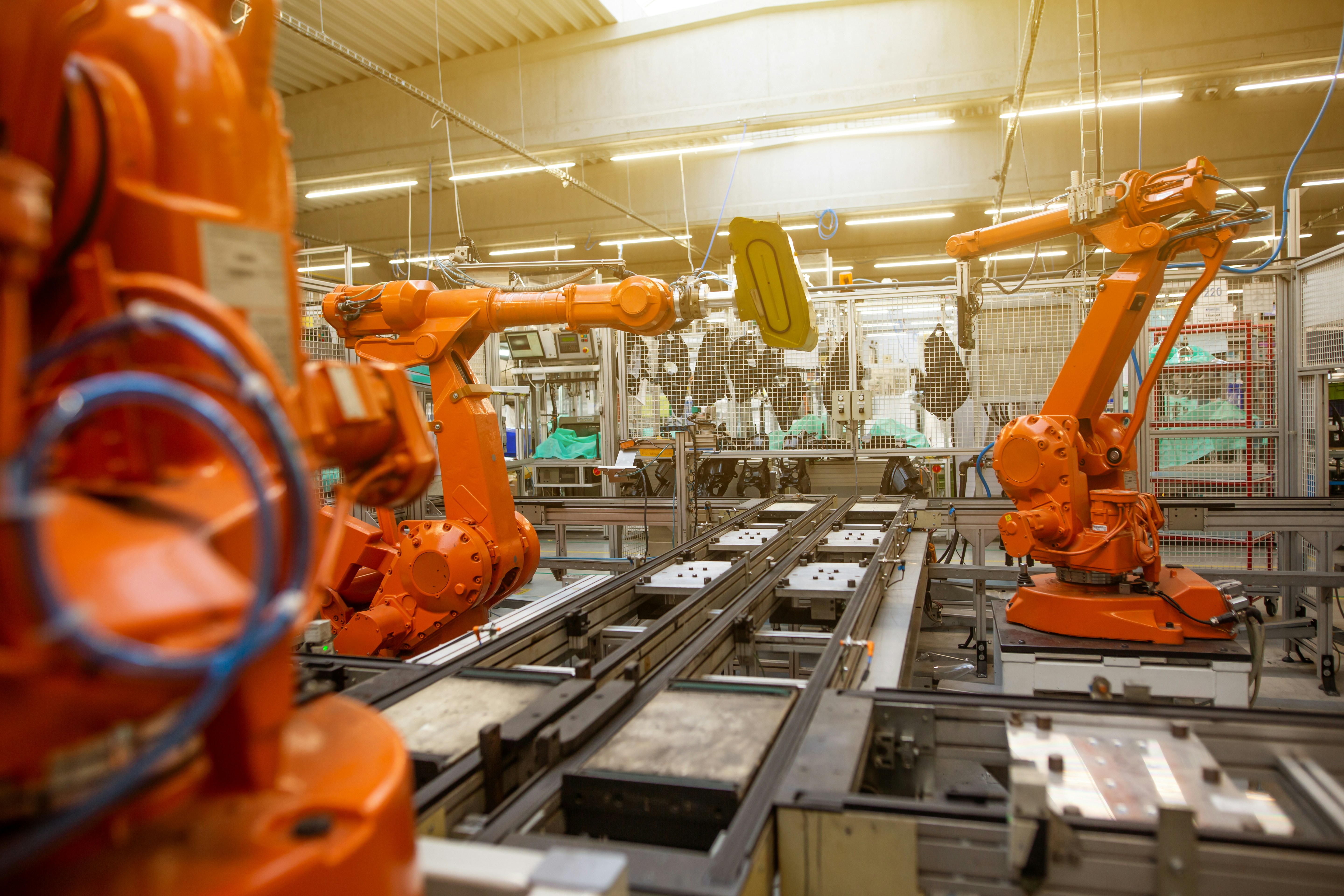
Top 10 Skills in Robotics According to LinkedIn & Indeed Job Postings
Robotics is undergoing a transformation—from factory automation to smart cobots in healthcare, logistics, and housing construction. In the UK, increased investment in robotics is creating substantial demand for professionals who can blend mechanical, electrical, software, and AI expertise with practical integration skills.
So, what are employers looking for in 2025? By reviewing UK job advertising trends on LinkedIn and Indeed, this article identifies the Top 10 robotics skills in demand—and shows how to highlight them on your CV, in interviews, and through impactful projects.
Quick Summary: Top 10 Robotics Skills Employers Want in 2025
Robot systems integration (mechanics, electronics, control)
Programming & control frameworks (ROS, MATLAB/Simulink)
Perception & computer vision (sensor fusion, AI)
Embedded systems & real-time control
Mechanical design & CAD (kinematics, actuation)
AI, machine learning & autonomy
Human–Robot Interaction (HRI) & co-bots
Safety standards & compliance (ISO 10218, UK regulations)
Simulation & digital twins (Gazebo, PyBullet)
Communication & cross-disciplinary collaboration
1) Robot Systems Integration (Mechanics, Electronics, Control)
Why it matters:Robotics jobs in the UK often involve integrating end-to-end systems—mechanical builds, electrical circuits, motion control, and software must work in harmony.
How to evidence it:
Document projects building mobile or manipulator robots, specifying how mechanical design, actuator selection, and control loops aligned successfully.
2) Programming & Control Frameworks (ROS, MATLAB/Simulink)
Why it matters:ROS is the de facto framework for robot control; proficiency in MATLAB/Simulink remains widespread for prototyping.
How to evidence it:
Include experiences building ROS nodes, control stacks, or simulation pipelines using Simulink.
3) Perception & Computer Vision (Sensor Fusion, AI)
Why it matters:Advanced robots rely on cameras, LIDAR, IMUs, and AI-based perception to navigate, detect, and interact effectively.
How to evidence it:
Share projects where you implemented vision or multi-sensor fusion for obstacle avoidance, localisation, or object detection.
4) Embedded Systems & Real-Time Control
Why it matters:Robots operate under hard real-time constraints. Embedded systems knowledge—PLC, microcontrollers, RTOS—is essential.
How to evidence it:
Highlight work on firmware for motor control, sensor interfacing on microcontrollers, or real-time data acquisition.
5) Mechanical Design & CAD (Kinematics, Actuation)
Why it matters:Designing manipulators or mobile platforms requires knowledge of CAD tools and mechanical principles such as torque, kinematics, and structural dynamics.
How to evidence it:
Include CAD models, kinematic analysis, and actuator specification records from your physical builds.
6) AI, Machine Learning & Autonomy
Why it matters:Autonomous robotics fuse AI with control—navigation planning, reinforcement learning, and adaptive behaviours.
How to evidence it:
Document autonomous capabilities you’ve experimented with—path planning, SLAM, or learning-based control.
7) Human–Robot Interaction (HRI) & Collaboration
Why it matters:Modern robots—from cobots to service robots—must interact intuitively and safely with people, requiring human-centred design.
How to evidence it:
Detail any usability studies, interface design, or interaction protocols you’ve designed for robots working with humans.
8) Safety Standards & Compliance (ISO 10218, UK Regulations)
Why it matters:Safety isn’t optional. Robots need to comply with international standards such as ISO 10218 and relevant UK health and safety legislation.
How to evidence it:
Include any risk assessments, safety validations, or adherence to standards you've carried out in your projects.
9) Simulation & Digital Twins (Gazebo, PyBullet)
Why it matters:Simulation helps avoid costly physical trials. Tools like ROS + Gazebo or PyBullet are used to prototype and test real-world scenarios quickly.
How to evidence it:
Showcase simulation workflows testing navigation stacks, control loops, or fault tolerance before hardware deployment.
10) Communication & Cross-Disciplinary Collaboration
Why it matters:Robotics brings together engineers, operators, managers, and domain specialists. Effective communication bridges these areas.
How to evidence it:
Highlight collaborative projects, user studies, or workshops you’ve led between technical and non-technical stakeholders.
Honorable Mentions
Soft and swarm robotics
Agricultural and construction robotics
Nuclear decommissioning robotics
How to Prove These Skills
Portfolio: GitHub repos, videos of robots in action, simulation logs.
CV: Quantify results—efficiency gains, automation metrics, safety improvements.
Keywords: Mirror terms found in UK job ads and standards (ROS, HRI, safety).
Interview-prep: Be ready with project stories—context, role, outcome, trade-offs.
UK-Specific Hiring Signals
The UK is expanding robotics adoption across manufacturing, logistics, agriculture, and healthcare.
Research institutions such as the Bristol Robotics Laboratory remain at the forefront of robotics innovation.
Government and industry partnerships are emphasising new apprenticeship pathways and specialist training to close the robotics skills gap.
Suggested 12-Week Learning Path
Weeks | Focus Areas |
|---|---|
1–3 | Basics of ROS + embedded control + mechanical fundamentals |
4–6 | Sensor integration + perception + simulation with Gazebo |
7–8 | AI & autonomy (path planning, SLAM) |
9–10 | HRI interaction design + safety validation |
11–12 | Build and demo a mini-robot system combining all aspects |
FAQs
Q: What is the most in-demand robotics skill in the UK?A: Systems integration—pulling mechanics, electronics, and controls together—is often cited as a core requirement.
Q: Is ROS still a key tool?A: Yes—ROS is almost ubiquitous for robot control systems and frameworks.
Q: Are HRI and safety gaining importance?A: Increasingly so, as robots move beyond industry into collaborative and public-facing roles.
Final Checklist
CV Tips: Emphasise full-stack robotics projects and measurable outcomes.
Skill Section: Include ROS, HRI, perception, simulation, Mechatronics, safety.
Portfolio: Videos, codebases, simulation logs, interaction studies.
Keywords: Match UK job ads in robotics (e.g., ROS, control systems, safety validation).
Conclusion
To succeed in UK robotics roles in 2025, cultivate a versatile portfolio of skills in integration, programming, perception, safety, simulation, and HRI—backed up with evidence of delivery. Show that you can build real robotics systems, collaborate across disciplines, and follow safety and regulatory norms. Demonstrating these with clarity and purpose positions you right where UK employers—including startups, academic labs, and manufacturing OEMs—are looking.


